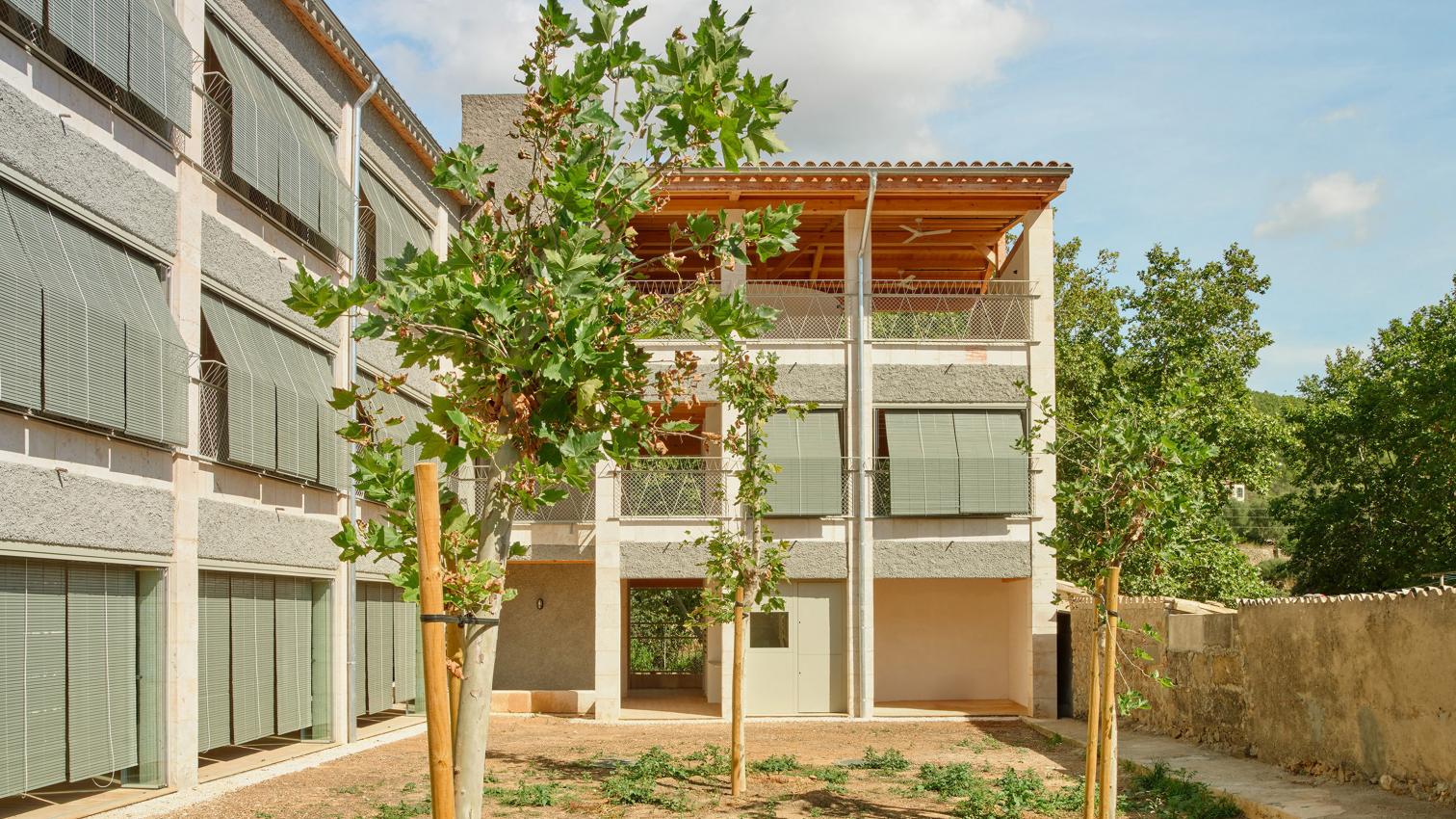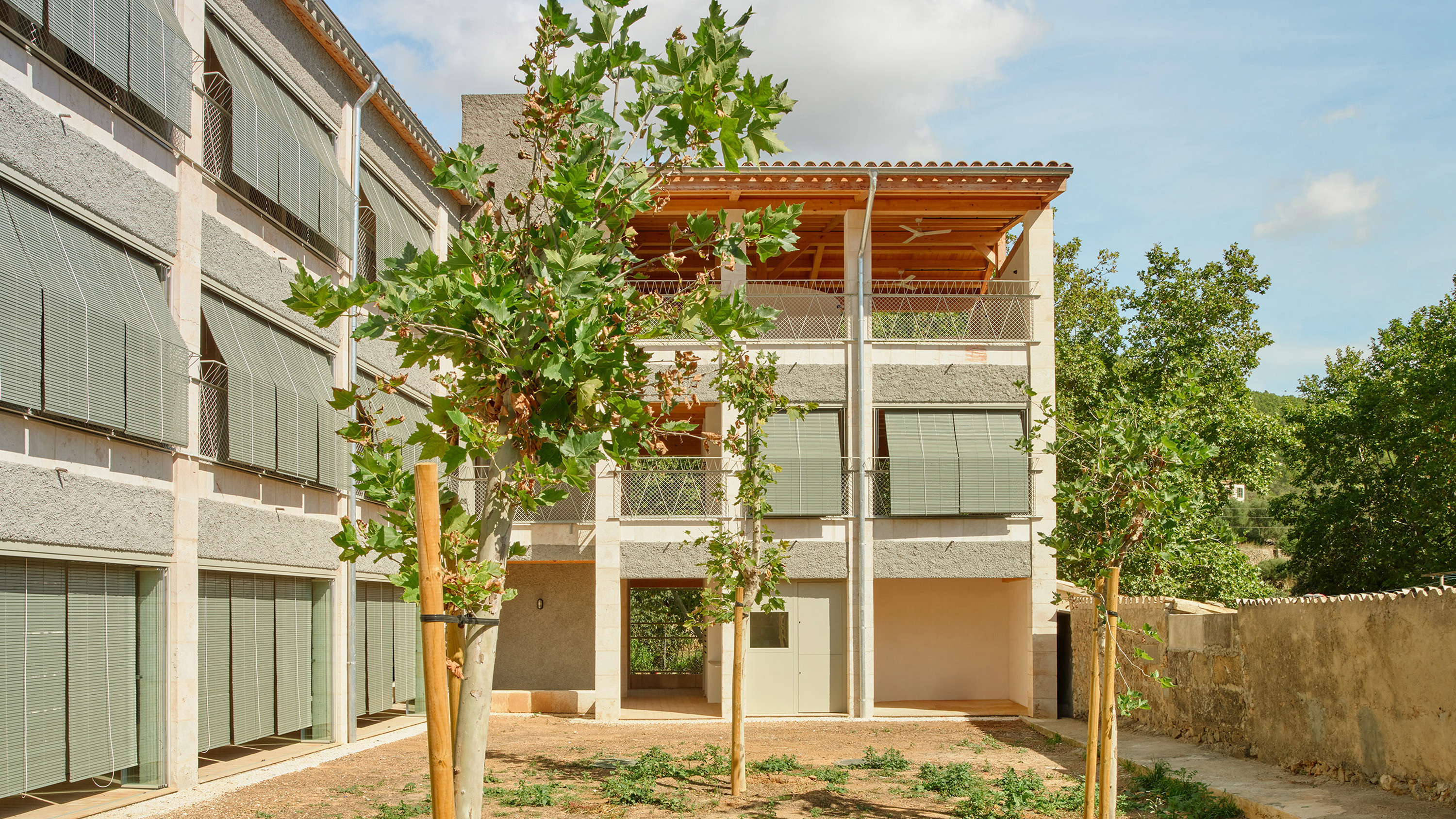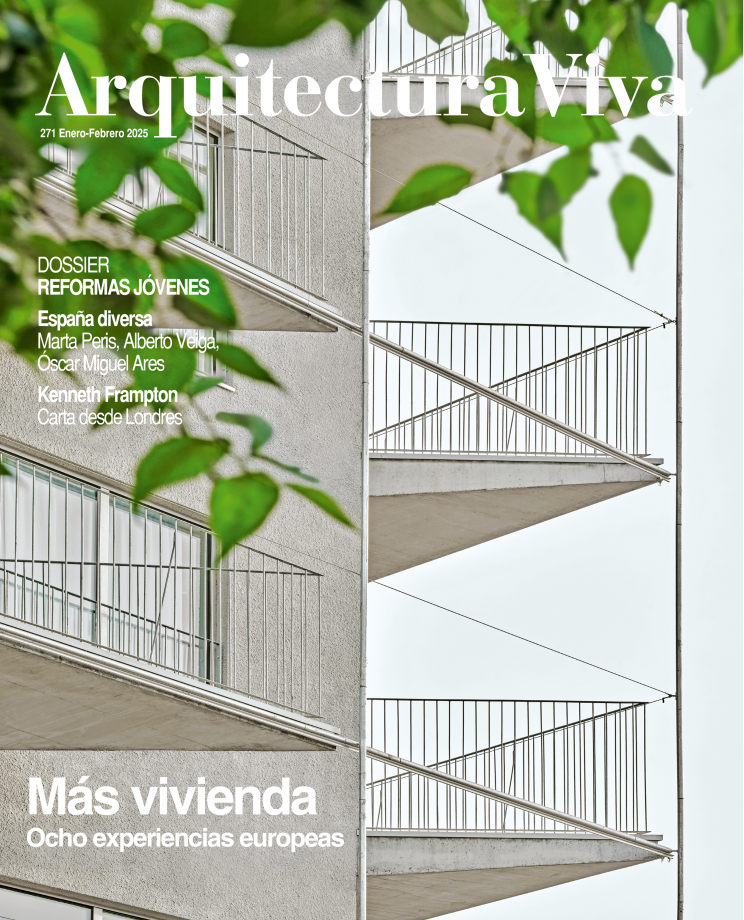More and Better
Recent Housing Projects in Europe

López Rivera Arquitectos. 18 intergenerational social housing in Esporles (Majorca)
A phantom advances across Europe, and along the way it stumbles upon serious difficulties to find accommodation. Housing is one of the problems that are besieging the Old Continent, immersed as it is in a residential crisis that threatens the very foundations of its welfare system. The resulting fissures result in multiple wounds – social, political, economic, climatic – and perhaps a single consensus: the dire need for housing.
If, as Leon Battista Alberti set down, the human necessity for shelter finds its archetypical form in the roof, it is underneath this domestic overhead cover wherein lie some of today’s most pressing challenges, and the convulsions caused by mass tourism, migrant crises, and climate change have a great impact on housing. Basic access to a dwelling is nowadays a serious problem for broad layers of society, including particularly vulnerable groups, such as young people. Alberti himself proclaimed that the house is simply a small city, and the city a large house. Therefore, to say more homes is to say more city. This is an ambitious ‘more’ that confronts the scarcity of available supply with a clear quantitative response, but without concealing the desire for a simultaneous ‘better.’
To take stock of the double aspiration, this special issue proposes a polyphonic section organized in four movements that correspond with geographical zones: Mitteleuropa, Switzerland, France, and Spain. Each area is represented by a pair of projects, in an ensemble of voices that expresses the variations of the demanded ‘more,’ and addresses the challenges of collective housing.
‘More’ translates as mehr in Germanic Europe, where feld72 has filled an urban void in Vienna with a block of apartments, offices, and retail spaces whose industrial facade, in addition to giving an existing construction an elegant wrapping, creates a threshold that acts as a filter for climate control and for views had from inside. Meanwhile, in Munich, Summacumfemmer and Büro Juliane Greb have finished the San Riemo development, which, apart from exemplifying the cooperative model, is a reflection on residential types, on flexibility, and on the role of users.
The Swiss banner could well add an iconic plus sign to its multilingual confederation (mehr, plus, più, pli). The Huebergass complex in Bern, designed by the studio GWJ in a spirit of community and urban ambition, holds up on its prismatic backs a wooden face that juts out toward a street as if it wanted to be an additional room. In Basel, the firm Esch Sintzel Architekten has transformed a wine storage facility into a residential project whose interior, clad in a subtle metal structure, reveals the sculptural presence of the preexisting concrete pillars, in a ready-made tone that invades the entire premises.
The French ‘more’ is a plus that we encounter in the block built by LAN in the 13th arrondissement of Paris, which combines its wooden frame and urban calling with the rigors of the elemental shape and a geometric lyricism, in a distillation of the lessons of the prefect Georges-Eugène Haussmann. And we see this in the Quatre cheminées project of Boulogne-Billancourt, a work of Déchelette Architecture, another timber structure, in this case enclosed with a sober wall of earth that is a fusion of material sensitivity and constructional innovation.
Spain – whose ‘more’ is más, or in truth the Catalan més – is represented by the volume that MAIO has raised in Sant Feliu de Llobregat, which is as lyrical when displaying its serialized cantilevers as it is when concealing them under the fabrics that envelop the building, and is as surreal in its entrances as it is progressive in the people it is intended for. And it is in the dwellings located in Esporles, designed by López Rivera, that the importance given to the local and to bioclimate strategies, with a subtle treatment of the open corridors and the window blinds, in unity with a social program, attests to a modest wisdom.
Latin, the old lingua franca of Europe, has two terms for ‘more,’ magis and plus, with which qualitative and quantitative dimensions are expressed. From the former comes magisterium, and with that we refer to the lessons contained in these projects, so that the latter, without ignoring the urgent need to reduce the housing deficit, also gets addressed with a plus in cultural ambition that would, as much as possible, yield ‘more’ and ‘better.’






